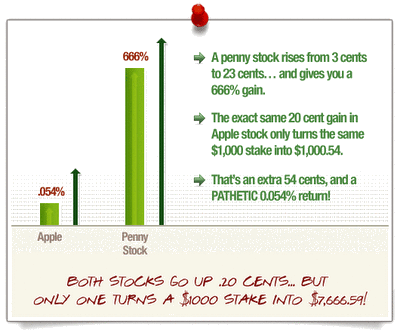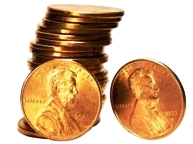It’s simple in theory. But in practice, it takes good old-fashioned discipline and hard work.
If you ask any broker or investor what a stock trading under $5 is or share trading under$1 is, they will tell you it is a penny stock or penny share, microcap stock, or nano stock. The three terms are for the most part interchangeable. But the wider definition of a penny stock or penny shares refers to a company’s cumulative value of its outstanding common shares, are better known as its market capitalization rather than its stock or share price.
Successful companies are made, they’re not born – and they have to work their way from humble beginnings and through the ranks just like everyone else. Microsoft’s initial public offering was March 13, 1986. The offering price was $21 per share. The stock has split 9 times. Some investors unfortunately believe that finding the next “big thing” means sifting through penny stocks in the hope of finding the next Microsoft (Nasdaq:MSFT) or Google (Nasdaq:GOOG). This strategy will prove to be unsuccessful in most cases.

Penny stocks can also work well with strategies like Swing Trading.
For referrence, check this link: About Penny Stocks
To calculate the market capitalization of a company (the market cap) you must multiply the stock price of the company by the amount of shares that are outstanding. By carrying out this calculation you can find out what the total dollar value of all shares in the company are at any given moment in time. Penny stocks are not traded on a stock exchange like other stocks but they are traded in the over-the-counter (OTC) market. For the trading of most stocks, an agent will act on the investors behalf and arrange a transaction directly between the investor and a third party. The broker then receives a commission for facilitating the trade.
The Best place to buy Penny Stocks is with an online broker.
The following is a list of the best online brokers for 2012: Best Online Brokers for 2012
A large proportion of all penny transactions are charged by brokers as principle transactions. This means that the broker is not paid any commission but rather makes its money on the spread, and by buying and selling at advantageous times. There is no single price at which penny stocks are bought and sold, but rather there are a number of different prices. The difference between the bid and ask price is known as the spread.
 The spread of many penny stocks are usually around 25-33% but can often be 50-100% or even more. There are also always two bid and two ask prices, these are known as the inside and outside bid and ask. Keep in mind that it is the outside bid and ask that is of most interest generally. Penny stocks are also subject to mark up pricing. This is where a broker has held the penny stock in its account and has therefore taken some of the risk associated with market price fluctuation.
The spread of many penny stocks are usually around 25-33% but can often be 50-100% or even more. There are also always two bid and two ask prices, these are known as the inside and outside bid and ask. Keep in mind that it is the outside bid and ask that is of most interest generally. Penny stocks are also subject to mark up pricing. This is where a broker has held the penny stock in its account and has therefore taken some of the risk associated with market price fluctuation.
Although Penny Stocks are quite complicated and there are many problems associated with trading penny stocks as well as millions of dollars of loss, many companies still trade in them because they can help for example, struggling companies just starting up. The best way of finding a good investment is by consulting with your broker. However, in the penny stock market, be very wary of brokers who are only trying to sell and may not have your best interests in mind.
Sign up with your email address now & get ready to make HUGE PROFITS.
(We are 100% Anti-Spam and will never rent or sell your information)

